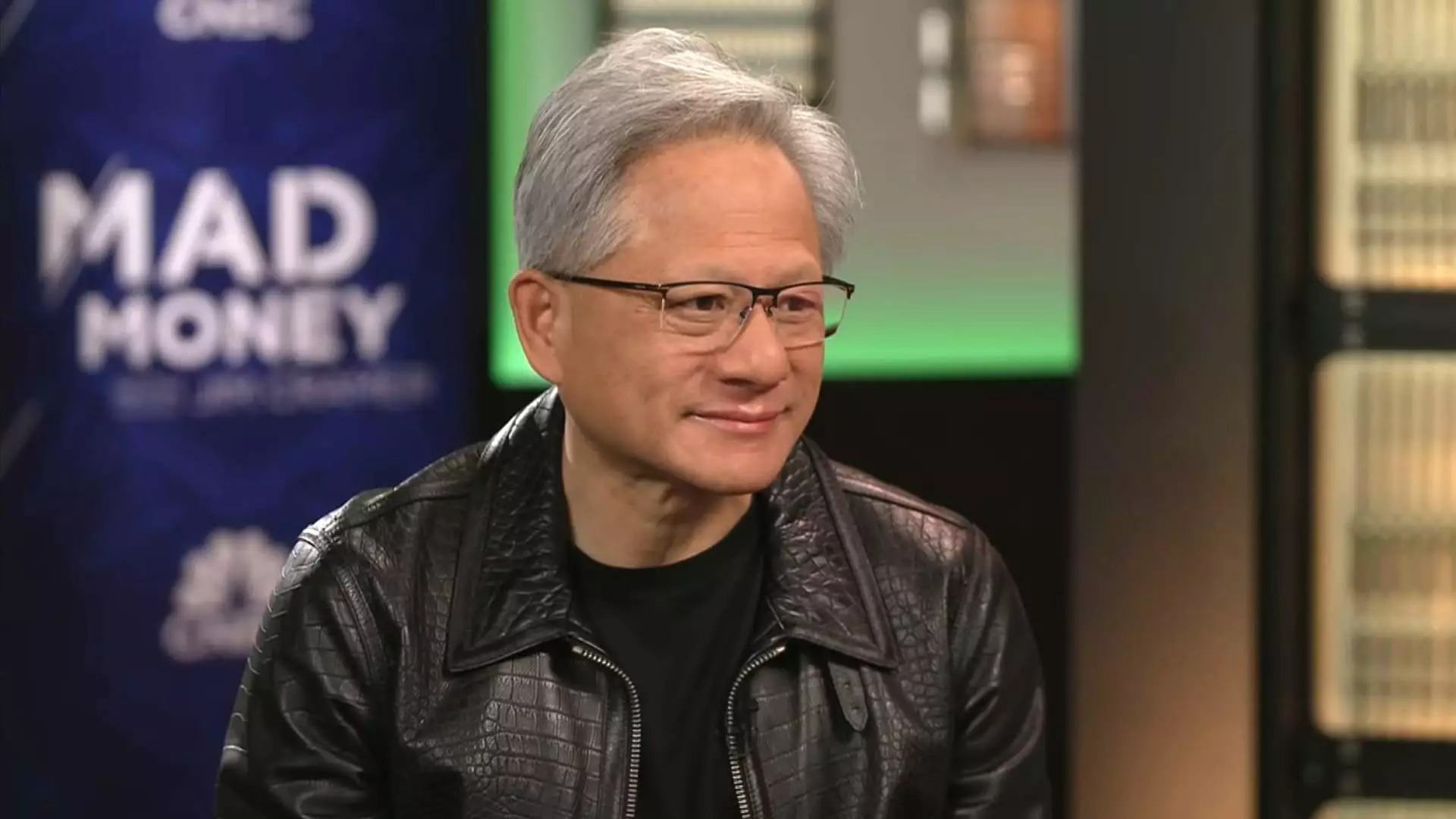In a recent interview, Nvidia’s CEO Jensen Huang attempted to present a brave face for his company amidst escalating trade conflicts and tariff threats. While he professes confidence that the impacts of President Donald Trump’s tariffs will not be significant in the short term, one must question the validity of this optimism. Ignoring the broader economic ramifications could prove hazardous for Nvidia and similar tech companies, as trade wars often carry longer-term consequences that can destabilize established markets. Huang claims, “We’ve got a lot of AI to build,” but it raises the question: at what cost? The lofty aspirations of AI development cannot offset the immediate dangers posed by unpredictable trade environments.
The Ripple Effect of Tariffs
Huang’s dismissive stance regarding tariffs suggests a troubling detachment from economic realities. It’s easy for a CEO of a colossal tech firm to overlook potential threats when his company’s immediate financial health seems secure, but the implications of a trade war reach far beyond a single corporate entity. Tariffs can disrupt supply chains, leading to inflated costs for both manufacturers and consumers. In an interconnected global economy, Huang’s assertion that Nvidia can withstand these shocks might prove to be an overly simplistic view. The looming concern is not just the physical manufacturing in America but the fundamental principle of nurturing healthy trade relationships that have fueled technology advancement.
A Trade War: A Double-Edged Sword
The discussion of “reciprocal tariffs” raises broader philosophical questions about America’s role in the global market. While Huang praises domestic manufacturing partnerships with companies like TSMC, Foxconn, and Wistron, this initiative might simultaneously stifle innovation and competitiveness. Tariffs can act as a protective mechanism, but they also risk isolating U.S. tech firms—encouraging retaliation from other nations. The danger of a trade war is that it might result in decreased access to crucial manufacturing resources and intelligence sharing, crucial elements for a company like Nvidia.
The AI Hype vs. Reality
Huang’s excitement about AI’s potential to be the “operating system of every industry” seems to coexist with rising fears regarding competition from domestic rivals, like DeepSeek. The recent market sell-off—where Nvidia shares plummeted over 20%—indicates a growing skepticism about whether AI can deliver the competitive edge Huang touts. As sentiment shifts, investors are apprehensive about Nvidia’s return on investment as competitors challenge it on price and performance. Huang’s assertions start to ring hollow if Nvidia cannot maintain its market position amid local and international pressures.
China: A Complicated Relationship
With the Biden administration tightening export controls that have already halved Nvidia’s revenue from China, one must wonder how a truly optimistic future can materialize. Huang argues that the demand for chips will only increase, but this claim becomes precarious without access to significant markets like China. There’s a complex relationship that Nvidia must navigate; losing a lucrative customer base is not merely a hurdle but a fundamental threat to long-term growth.
While Huang conveys an unwavering commitment to American manufacturing, the road ahead appears fraught with challenges requiring careful navigation through economic uncertainties, geopolitical tensions, and competitive pressures.

